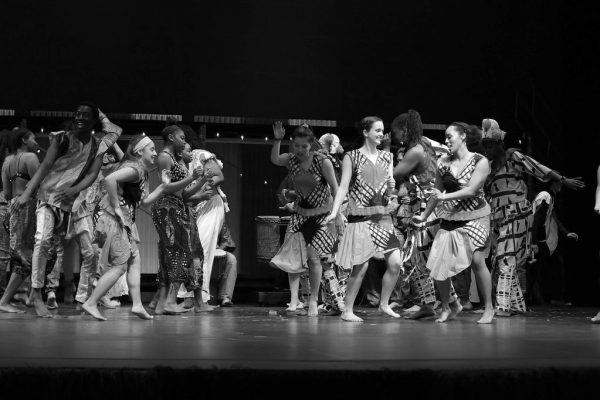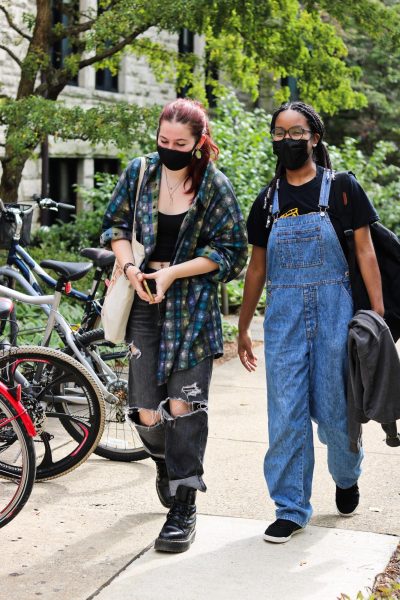Reflections on Oberlin’s Culture of Isolationism
Having been here for almost four years now, I can say with some certainty that we hold tightly to isolationism here at Oberlin. I don’t mean in the broader political-economic sense, but rather that the student body of the College is decidedly insular and much prefers the safety of our College island to the outside world. Such instincts are not without reason, of course. For those who might come from more conservative places and drive through the flatlands surrounding our town to make a home here, the apparent universal love that is preached as the College’s prime ideology can be a relief, a cold washcloth when the rest of your life feels a fever of judgement. The College has always espoused egalitarianism and unconditional respect and, quite often, has lived up to it. This stands in stark contrast to the disdain that the use of the singular “they” might garner just a few steps outside the town limits. And so, we isolate.
We find comfort in the fact that our world need not extend past North Main Street and South Professor Street. It’s not a conscious choice, and for many, such an Oberlin-College-life is the only time they feel fully comfortable expressing, discovering, and living as themselves. I cannot stress enough that this is no trivial thing, and that to recognize the incomprehensible depth of any one person’s being is to recognize everyone’s need for self-actualization in this way.
And yet! If this were the only consequence, I would not be writing this article. In reality, whether or not we like to admit it, Oberlin’s students, by virtue of our very existence, impact the people, the land, and the relations — including the very things we push out of sight. In our isolationism, we ignore this impact and fail to take accountability for it.
To be frank, I began to contemplate this issue long ago but only realized its importance as my leave from the College grew so close as to be unignorable. Funnily enough, it is the very fact that I will no longer be in an area where such antagonisms exist that has reminded me how much I care about them. I know I’m not alone in saying that one of Oberlin’s great attractions for the liberal elite that predominate the school is some strange fascination with being near the purple parts of America, the chance to interact with “the enemy.”
It is important to note that Oberlin’s implied egalitarian claim — that all people deserve to live in a community that accepts them, educates them, and allows them to thrive — is only prima facie consistent with our sharply protectionist principle for those within our specific community. If all people deserve this, ought we not be using our position to transform the outer reaches of Oberlin? Lorain County? Ohio entirely? The College’s slogan is “one person can change the world,” and more often than not, we take “the world” to be “the world that will listen.” To be consistent, we must find a way to protect but not shelter.
Moreover, isolationism creates antagonism that breeds false narratives. These encourage us to retreat ever further while encouraging, for those who look upon our retreat, angry disdain: “How dare these kids transplant here, feign moral superiority, impose their beliefs upon my community, and then avoid and look at us as though we are devils on earth.” So, in an attempt to begin a sort of healing, let us examine our false narrative, for perhaps then others might be encouraged to examine theirs. Rather than have our cultivated safety feel smaller and smaller by the year, we can instead grow it and extend its embrace.
The core of our false narrative is a partial truth — if such things can exist. I don’t profess to be remotely the first to discuss this: Student activists, local historians, and professors — such as Gary Kornblith and Carol Lasser, emeriti professors of History at the College — have pointed out that Oberlin was never a perfect example. It has always been an “Elusive Utopia,” as Kornblith and Lasser titled their 2018 book. In that text, they point out truths about Oberlin’s history, such as the disavowal of Black residents to purchase property and racist sentiments from both town residents and College officials. Even today, our communal doublespeak is obvious: We are a progressive institution yet will more readily support a union of workers in Thailand than in Oberlin. We’re pro-union students who rail against the administration and “Ambar’s union-busting” (to quote a friend inaccurately attributing such horrors) and yet never show up to Student Labor Action Coalition meetings or take meaningful action. We demand racial equality, yet make no attempts to change our institutions’ continued, racist mistakes. However, “despite Oberlin’s retreat from the founder’s commitment to racial egalitarianism, the community continued to enjoy a special place in the imagination” (Kornblith/Lasser).
This false narrative fuels our isolationism because it gives us the impression that the rest of Ohio, moving ever to the right, is encroaching upon our haven. It triggers a fight-or-flight response, for the city upon a hill is surrounded by invaders who wish to tear down its accomplishments — lest we forget that this same city can be viewed from all angles and for all its moral poverty. Take the fact that, almost six years down the line, the first-years know not to go into Gibson’s Food Mart & Bakery, but most don’t know why — only that the owners violated the sanctity of Oberlin’s “non-racist” bubble. The Gibson family is to them a part of the invading cavalry. I don’t wish to discuss the politics of that scenario here, but it is suffice to say that, in virtue of this narrative, we have put a significant barrier before any attempts to open a discourse with members of the town who saw Gibson’s as in the right, which does nothing but make Oberlin a practically less safe space for the people we wanted to protect in the first place.
The solution here is not simple. The truth is that there is good reason for reticence around breaking these barriers, and it isn’t fair to expect everyone, especially those who most need Oberlin’s safety, to put themselves out there in the hope that we might begin to bridge the gap. But the only way we truly resolve our hypocrisy is by, first, doing the work of reexamining our memory; second, ceasing to bill ourselves (and yes, this includes you, admissions) as a historical champion of justice; and third, doing whatever is in our personal capacities to begin removing the moral tariffs Oberlin’s isolationism encourages us to uphold.




